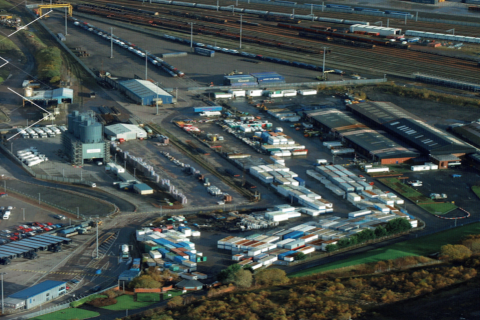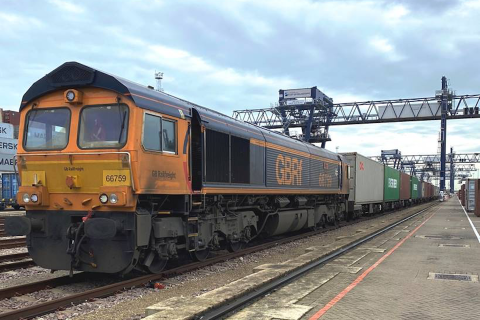UK derailment Eastleigh caused by infrastructure fault

The derailment of the railway through Eastleigh, just north of Southampton, was caused by an infrastructure fault. This was reported by infrastructure manager Network Rail. “A small number of fastenings gave way. This led to track spread – meaning that the two rails were no longer the correct distance apart”, the company said.
The derailment has caused significant damage to the tracks that will take weeks to repair. The main railway line was opened on Monday 3 February to allow for a part of the affected rail freight traffic to run through the important region, after six days of emergency repair works. However, the railway line has not recovered all services, as more repair work is on the agenda.
Similar fastening
The particular type of fastening is only used in a limited number of locations. Since the incident, Network Rail has conducted enhanced precautionary inspections of all similar fastenings across the Wessex route, with no additional areas of concern identified through this work.
During the incident teams worked around the clock to reopen the railway. Hydraulic jacks and cranes were used to lift the wagons back on to the track before they were removed from site.
Damage
The derailed train caused extensive damage to several sets of points, which allow trains to cross from one track to another. These had to be removed completely and a new set will be built off site to a bespoke design, this is expected to be delivered over coming weeks.
In the meantime, over 160 metres of temporary track has been laid to allow the reopening of the railway, however, without the critical points in place, not all trains can call at Eastleigh station. John Halsall, Network Rail Southern Region Managing Director said: “The railway through Eastleigh has been reopened. The derailment caused a phenomenal amount of damage to the rail infrastructure; we are working as quickly as we can to restore the full service and apologise to those whose journeys are still affected. A new set of points is being constructed from scratch as the old set were damaged beyond repair, this will take time and will be completed in the coming weeks.
Editorial
Simon Walton, UK Correspondent for RailFreight.com, says there are important questions still to be answered and points to be raised:
It is good for the industry that investigations into the cause of this disruptive derailment have yielded answers so quickly. However, that’s not the end of the issue.
Network Rail, and more importantly the safety watchdog, the Rail Accident Investigation Branch (RAIB), will be seeking many more answers into how something as fundamental and potentially dangerous could have come about.
In 2017, an empty coach stock movement derailed in Wimbledon, south London in circumstances of a short section of track that fell between the maintenance responsibilities of two organisations. Fortunately, as at Eastleigh, there were no injuries. However, many people will recall the serious fatal accident at Hatfield in 2000, when a broken rail caused an express passenger train to derail, killing four people. That brought about a radical revision of rail maintenance, and largely contributed to the disbandment of Railtrack, the dysfunctional forerunner of Network Rail.
We still await findings for the recent Barking derailment in north London at the end of January, so we can’t comment there yet. In the Eastleigh case however, it seems likely that the RAIB report when published will stress the continued importance of permanent way maintenance.
You just read one of our premium articles free of charge
Want full access? Take advantage of our exclusive offer






